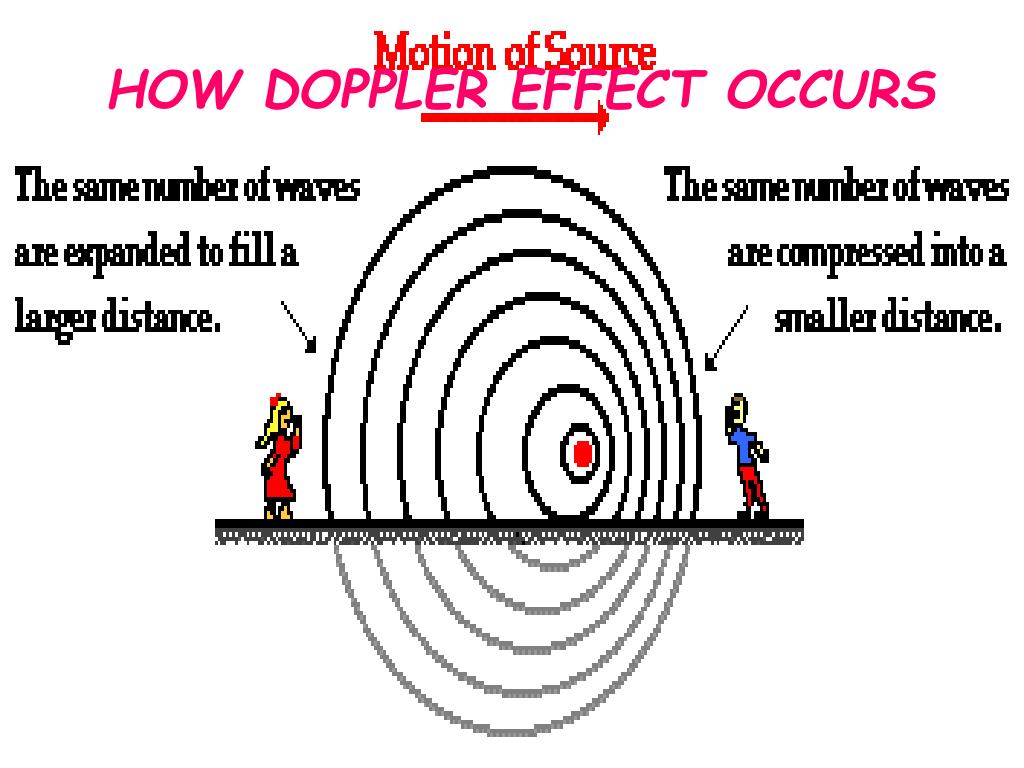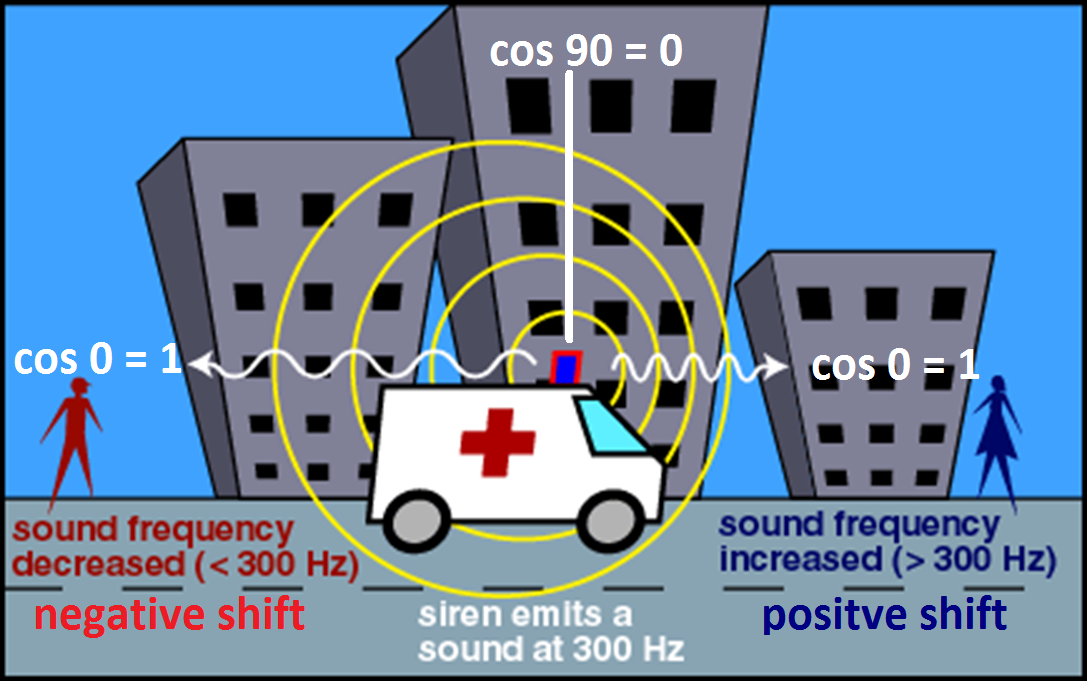

Conversely, if the source of waves is moving away from the observer, each wave is emitted from a position farther from the observer than the previous wave, so the arrival time between successive waves is increased, reducing the frequency. While they are traveling, the distance between successive wave fronts is reduced, so the waves "bunch together". Hence, the time between the arrivals of successive wave crests at the observer is reduced, causing an increase in the frequency. The reason for the Doppler effect is that when the source of the waves is moving towards the observer, each successive wave crest is emitted from a position closer to the observer than the crest of the previous wave. Therefore, each wave takes slightly less time to reach the observer than the previous wave. This occurs because the honking car is first moving toward you, and then as it passes away from you. Most of us have experienced the Doppler effect in a familiar scenario: a car horn appears to drop in pitch as the honking vehicle passes. Compared to the emitted frequency, the received frequency is higher during the approach, identical at the instant of passing by, and lower during the recession. The reason for this is a phenomenon known as the Doppler effect. Doppler radar and sonar use the Doppler effect on reflected radio and sound waves to distinguish between stationary and moving objects and to determine the velocity of moving ones the echolocation of bats and some whales also exploits the Doppler effect on reflected sound waves for navigating and catching prey.The Doppler effect (or the Doppler shift) is the change in frequency of a wave in relation to an observer who is moving relative to the wave source.Ī common example of Doppler shift is the change of pitch heard when a vehicle sounding a horn approaches and recedes from an observer. As galaxies speed away from us, the frequency of the light emitted appears lower. Astronomer Edwin Hubble reasoned that the red shift was due to the Doppler effect.

The frequencies of light given off by various substances (such as the burning of hydrogen in the fusion reactions of most stars) has been found to be lower in distant galaxies and other celestial objects, a phenomenon called red shift, since the visible light is shifted toward the red, low-frequency end of the spectrum. The Doppler effect on light waves has enabled scientists to determine that the universe is expanding. Similarly, motion away from the source entails following the wave's motion, so the peaks and troughs are encountered less often, and the frequency is lower for the moving observer (hence the lower whistle pitch). Motion toward the source of a wave (or, equivalently, motion of the source toward the observer) entails that the peaks and troughs of the wave are encountered more quickly than if there were no motion, so the frequency of the wave is higher for the moving observer (hence the higher whistle pitch).

This is an example of the Doppler effect, common to all wave phenomena (in this case, a sound wave).

A Closer Look The whistle of an approaching train has a higher pitch as the train approaches than when it recedes, even though that same whistle, heard by a passenger on the train, maintains a constant pitch.


 0 kommentar(er)
0 kommentar(er)
